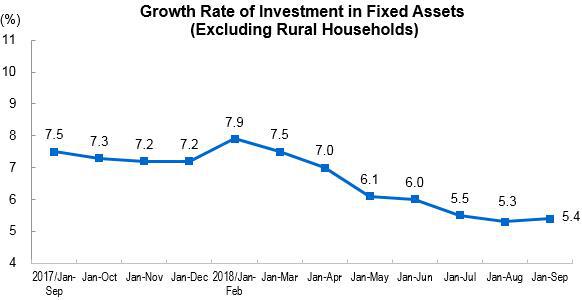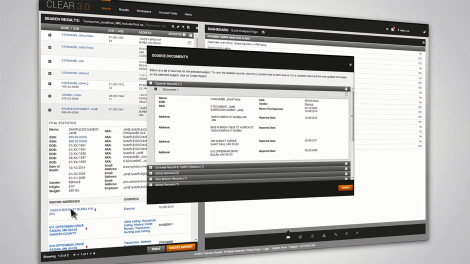

Depreciation refers to an asset’s gradual wear and tear that reduces its initial value. Amortization, on the other hand, is the general reduction in the value of an intangible asset over its useful life. The recovery period is the number of years over which an asset may be recovered. Both depreciation and amortization are shown in the debit column and are a liability of the company. Being non cash expense, they act as a liability that decreases the earning of the company but help in increasing the cash flow of the company.
Depreciation is the loss of value of an asset over time due to wear and tear age, or other factors. Businesses cannot manipulate it to get better tax returns in a specific reporting period. It’s important to note that the decision to amortize or depreciate an asset is not always straightforward, and it may be necessary to seek the advice of a financial professional.
Negative amortization may happen when the payments of a loan are lower than the accumulated interest, causing the borrower to owe more money instead of less. Goodwill is the market credibility of a company and, thus, is intangible. Balloon PaymentsThe balloon payment is a huge sum paid at the end of a loan tenure.
However, there is only one method of amortization that companies generally use. The properties, including buildings, equipment, tools, machinery, etc. let businesses manufacture and produce goods that they sell to generate revenue. Any damage to these ultimately affects the value of those properties, causing depreciation. For example, in a damaged plant resale, buyers would hardly take interest in buying it unless the sale value is low.
Amortization vs. Depreciation: Understanding the Key Differences For Your Business
The FASB says that publicly traded companies should not amortize goodwill, though private companies and not-for-profits may choose to do so. Since fixed assets have a salvage value and intangible ones don’t, they use different methods for accounting. The depreciation method applies to fixed assets, and the amortization method is used for intangible assets. Tangible Assets are depreciated using either the straight-line method or accelerated depreciation method.
- In contrast to tangible assets, loans do not lose value or wear down like physical assets.
- – The same depreciation expense is charged in the income statement over the asset’s useful life.
- Investors and analysts can use EBIT to compare companies in the same industrial sector that have different capital structures or operate in different tax jurisdictions.
- Of the different options mentioned above, a company often has the option of accelerating depreciation.
Amortization and depreciation are subject to different accounting standards. Both are noncash expenditures, and both depreciation and amortization appear as a reduction in the assets on a balance sheet. In contrast to tangible assets, loans do not lose value or wear down like physical assets. The declining balance method calculates depreciation faster than the straight-line method, meaning that a higher percentage of the asset’s value is depreciated in the early years of its useful life.
Key Takeaways
Further you can also file TDS returns, generate Form-16, use our Tax Calculator software, claim HRA, check refund status and generate rent receipts for Income Tax Filing. The amortization of a loan is known as the process of paying back the outstanding balance in full over time. When a loan is granted, a series of fixed payments is built at the outset, and the individual who takes the loan is responsible for meeting each of the payments. Cloud accounting software can help you track and report these and other financial metrics. With real-time access to all of your financial data, you can stay on top of what’s happening in your business whether you’re in the office or working remotely. That way, you always have the most comprehensive and accurate view possible so you can make the best strategic decisions for your business.
If so, the remaining depreciation or amortization charges will decline, since there is a smaller remaining balance to offset. Amortization helps businesses and investors understand and forecast their costs over time. In the context of loan repayment, amortization schedules provide clarity into what portion of a loan payment consists of interest versus principal. This can be useful for purposes such as deducting interest payments for tax purposes. As its name suggests, EBITDA differs from EBIT by excluding depreciation and amortization. Depreciation and amortization are accounting techniques that spread the cost of an asset over several years, resulting in a recurring expense that is deducted from the company’s revenue each year.

Such tax forms have instructions on how to fill them out and how to do the necessary calculations. Amortization is paying off a loan or debt over time with regular payments to decrease the asset’s cost. It’s an essential financial term you should know if you want to understand how to manage your money and avoid debt. In depreciation and amortization, the cost of the acquired asset is allocated proportionately throughout the asset’s life according to the applicable accounting standards.
Amortization vs. Depreciation: Key Differences
The concept of both depreciation and amortization is a tax method designed to spread out the cost of a business asset over the life of that asset. Business assets are property owned by a business that is expected to last more than a year. Physical assets are subject to wear and tear and their value gets reduced with passage of time.
Both depreciation and amortization can be recognized as an expense in the profit and loss statement of the company to reduce tax liability. Since amortization doesn’t deal with physical assets, the process is no different for a home business than any other business that owns intangible property. But it, and other financial reports and metrics, rely on accurate and up-to-date data. Business accounting software helps you accurately report EBIT and other measures.
Intangibles are amortized over time to tie the cost of the asset to the revenues it generates, in accordance with the matching principle of generally accepted accounting principles . Amortization typically refers to the process of writing down the value of either a loan or an intangible asset. Depreciation and Amortization affect the equity and balance sheet of the company, respectively. Due to depreciation, the value of a company’s equity gets affected, mostly reducing. On the other hand, due to the yearly amortization of assets, the balance sheet is affected as it reduces the asset side of the statement.
Similarities Between Amortization and Depreciation
The asset’s book value is the asset’s original cost minus the accumulated depreciation. The sum-of-the-years’-digits method is similar to the declining balance method, but the depreciation rate is based on the sum of the digits of the asset’s useful life. Understanding the differences between these two methods can be important for various reasons. For instance, a business owner would want to know the differences between amortization and depreciation because of how it can impact tax liability and the financial statements of their business. Depreciation of some fixed assets can be done on an accelerated basis, meaning that a larger portion of the asset’s value is expensed in the early years of the asset’s life. This results in far higher profits than the income statement alone would appear to indicate.
Specifically, amortization occurs when the depreciation of an intangible asset is split up over time, and depreciation occurs when a fixed asset loses value over time. Amortization is a technique of gradually reducing an account balance over time. When amortizing loans, a gradually escalating portion of the monthly debt payment is applied to the principal.
The straight-line method is the most frequently used method for calculating depreciation. Under this method, an equal amount of depreciation is recorded each year over the asset’s useful life. However, Depreciation can be more useful for taxation purpose as a company can use accelerated depreciation to show higher expenses in initial years.
Reduction in the value of a tangible asset due to normal usage, wear and tear, new technology, or unfavourable market conditions is called depreciation. Assets such as plant and machinery, buildings, vehicles, etc. which are expected to last more than one year, but not for an infinite number of years are subject to depreciation. The two basic forms of depletion allowance are percentage depletion and cost depletion. The percentage difference between depreciation and amortization depletion method allows a business to assign a fixed percentage of depletion to the gross income received from extracting natural resources. The cost depletion method takes into account the basis of the property, the total recoverable reserves, and the number of units sold. In other words, the depreciated amount expensed in each year is a tax deduction for the company until the useful life of the asset has expired.
Impairment evaluation is a complex and costly process, so the FASB reallowed the amortization of goodwill as an intangible asset over 10 years in 2014, only for private companies. Depreciation is a planned, gradual reduction in the recorded value of a tangible asset over its useful life by charging it to expense. Depreciation is applied to fixed assets, which generally experience a loss in their utility over multiple years. The interest portion is the amount of the payment that gets applied as interest expense.
So, in that case, every year $1250 ($10000/8) will be amortized as an expense. The Depreciated amount hence serves as a tax deduction for the company until the useful life of the asset has expired. Depreciation can be calculated in one of several ways, but the most common is straight-line depreciation that deducts the same amount over each year.
It essentially reflects the consumption of an intangible asset over its useful life. It also added the value of Milly’s name-brand recognition, an intangible asset, as a balance sheet item called goodwill. It is accounted for when companies record the loss in value of their fixed assets through depreciation. Physical assets, such as machines, equipment, or vehicles, degrade over time and reduce in value incrementally. Unlike other expenses, depreciation expenses are listed on income statements as a „non-cash” charge, indicating that no money was transferred when expenses were incurred. If you’re calculating EBITDA from a company’s financial statements, you’ll find net income, interest expense and taxes on the income statement.
A home business can deduct depreciation expenses for the part of the home used regularly and exclusively for business purposes. When you calculate your home business deduction, you can include depreciation if you use the actual expense method of calculating the tax deduction, but not if you use the simplified method. The IRS requires businesses to follow specific regulations in order to be able to deduct the costs of business assets (the IRS calls them „property”). EBITDA is also a popular metric for leveraged buyouts, in which an investor finances the acquisition of a company with debt.